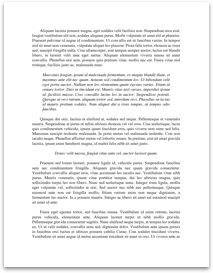Hooke’s Law Lab
Objective: To determine the relationship between the elongation of a spring and the force applied (added mass).
Materials: Hooke’s Apparatus
Two springs
Larger diameter spring (spring 1)
Smaller diameter spring (spring 2)
Set of masses
Procedure:
1) Gather all materials
2) Attach spring 1 to the hook on the platform
3) Squeeze back of ruler to zero in the needle
4) Place each weight onto the platform
5) Measure the weight of each weight on the platform
6) Record data
7) Attach spring 2 to the hook on the platform
8) Repeat steps 2-6
9) The data must be measured to the nearest tenth
Results:
Table 1: (smaller spring)
Mass (g) Elongation of spring (cm)
|20 g |.3 cm |
|30 g |.8 cm |
|40 g |1.3 cm |
|50 g |1.8 cm |
|60 g |2.2 cm |
|70 g |2.9 cm |
|80 g |3.4 cm |
|90 g |4.0 cm |
Table 2: (large spring)
|20 g |0 cm |
|30 g |.3 cm |
|40 g |.6 cm |
|50 g |1.0 cm |
|60 g |1.4 cm |
|70 g |1.7 cm |
|80 g |2.1 cm...
Objective: To determine the relationship between the elongation of a spring and the force applied (added mass).
Materials: Hooke’s Apparatus
Two springs
Larger diameter spring (spring 1)
Smaller diameter spring (spring 2)
Set of masses
Procedure:
1) Gather all materials
2) Attach spring 1 to the hook on the platform
3) Squeeze back of ruler to zero in the needle
4) Place each weight onto the platform
5) Measure the weight of each weight on the platform
6) Record data
7) Attach spring 2 to the hook on the platform
8) Repeat steps 2-6
9) The data must be measured to the nearest tenth
Results:
Table 1: (smaller spring)
Mass (g) Elongation of spring (cm)
|20 g |.3 cm |
|30 g |.8 cm |
|40 g |1.3 cm |
|50 g |1.8 cm |
|60 g |2.2 cm |
|70 g |2.9 cm |
|80 g |3.4 cm |
|90 g |4.0 cm |
Table 2: (large spring)
|20 g |0 cm |
|30 g |.3 cm |
|40 g |.6 cm |
|50 g |1.0 cm |
|60 g |1.4 cm |
|70 g |1.7 cm |
|80 g |2.1 cm...
